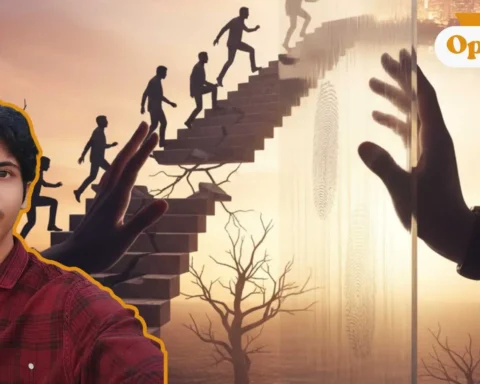The crisp wind of fall, as it transitions into winter, provides cosy nights, festive joy, and, for many, a sense of tranquilly. But for some, this time of year signals the onset of a battle that goes beyond a hatred for the cold. This is Seasonal Affective Disorder (SAD), a complicated psychiatric illness that goes much beyond the colloquial “winter blues.”
According to science, SAD is closely related to biological and environmental changes that occur during particular seasons. It is most frequently associated with winter when daylight hours are reduced significantly. According to research published in The Lancet Psychiatry, roughly 6% of persons in the United States suffer from severe SAD, while up to 14% have a lesser type known as subsyndromal SAD. This disorder is more than simply a mood fluctuation; it is a diagnosable type of depression that can interfere with daily life.
What causes this seasonal slump? Seasonal Affective Disorder is fundamentally a response to decreased exposure to natural light. Shorter days result in less sunshine, disrupting the body’s internal clock or circadian rhythm. According to research from the National Institute of Mental Health, this disturbance interferes with the production of serotonin, a neurotransmitter important for mood regulation. Melatonin levels, which regulate sleep-wake cycles, are also elevated, leaving people feeling sluggish and weary.

An imbalance of serotonin and melatonin can cause a chain reaction of symptoms, including chronic depression, trouble focusing, weakness, and even physical signs such as changes in appetite and weight fluctuations. These impacts are more severe in places farthest from the equator, where sunshine is sparse for lengthy periods of time.
In arctic places like Tromsø, Norway, the sun doesn’t appear for months due to the polar night. How do they deal with the lengthy darkness? Research from the University of Tromsø indicates that cultural attitudes and community resilience are key factors. In some areas, individuals actively seek light exposure, whether through artificial light treatment or outdoor activities at dusk. Social contact also acts as a buffer, emphasising the psychosocial elements that reduce SAD’s impact.
One of the most pressing issues for people with SAD is public misconception. It’s tempting to dismiss the disease as “winter blues,” a fleeting sense of sadness that may be alleviated with a warm drink and a nice movie. However, SAD is a clinical illness that demands care. Unlike transitory melancholy, it lasts for weeks or even months, limiting one’s capacity to operate. Psychologists emphasise that SAD is distinguished from general depression by its regular seasonal rhythm. Unfortunately, this regularity frequently leads to it being trivialised, spreading stereotypes that discourage people from getting treatment.
Beyond biological causes, psychosocial factors impact how SAD develops. Isolation, which increases during the winter months, may exacerbate feelings of desolation. Cultural stigmas around mental health can hinder people from admitting their symptoms or seeking professional help. This is especially troublesome in urban areas, where communal links are weaker, forcing people to deal with their problems alone.

One of the most common myths regarding Seasonal Affective Disorder is that it only happens in the winter. In rare situations, some people suffer from summer-pattern SAD, which is caused by excessive heat and sunshine. Another fallacy is that everyone experiences SAD in the same way. Symptoms and intensity vary greatly, and they are affected by genetic predisposition, lifestyle, and environmental factors. It’s also critical to differentiate SAD from other disorders, such as general exhaustion, burnout, or holiday stress. While these disorders may share symptoms, they lack the seasonal recurrence and physiological foundations of SAD.
Seasonal Affective Disorder is not an unrelenting punishment. Many people successfully control their symptoms with the right intervention, whether it is medication, light treatment, or cognitive-behavioural therapy. However, empathy and understanding are essential. It is imperative to put aside demeaning labels and acknowledge that SAD merits our awareness and compassion just like any other mental illness.
So, as the nights lengthen and the days become shorter, consider this: Is this a passing winter depression, or is it something more? Knowing the difference could make all the difference.

Have you ever experienced the winter blues? Share your story or opinion in the comment section below or write to us at larra@globalindiannetwork.com.









